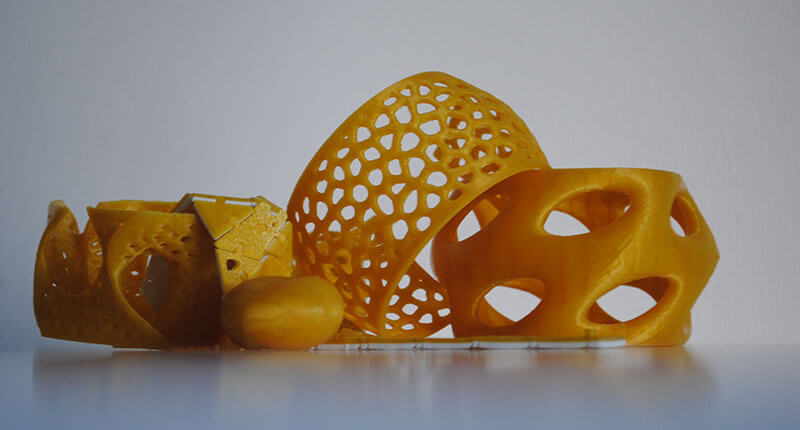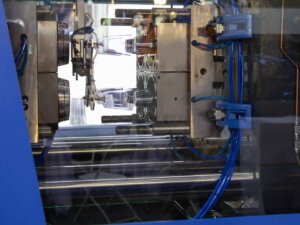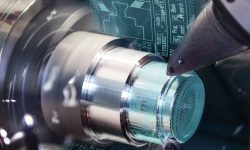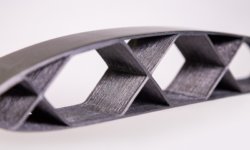3-D printing has gained a great deal of traction in the past few years. Its popularity is expected to grow as the techniques become more refined and focused. Unlike some experts warned, though, 3-D printing is not poised to replace CNC machining. Forward-thinking companies combine the properties of both techniques to develop strategies that meet their clients’ needs.
Overview of CNC machining
CNC machining is a subtractive manufacturing process that uses computer-controlled machines to remove material from a workpiece. The process involves three main components: the computer (which controls the machine), the tool (which cuts the material), and the workpiece (the material being shaped).
The computer uses strict instructions to guide the tool as it moves across the workpiece, cutting away material and creating the desired shape.
Overview of 3D Printing
3D printing is an additive manufacturing process that builds three-dimensional objects layer by layer using a computer-controlled printer. The process involves three main components: the computer (which controls the printer), the material (which is usually a thermoplastic or resin), and the printer (which creates the object).
The computer uses precise instructions to guide the printer as it lays down layers of material, gradually building up the object from the bottom up. This process can be used to create complex geometries, including curved and hollow shapes, and can produce objects with a high degree of accuracy and detail.
How Can CNC Machining and 3D Printing be Used Together?
CNC machining and 3D printing can be used together to enhance manufacturing processes and create complex parts with high precision and accuracy. Here are some examples of how these two technologies can be used in conjunction:
- Using 3D printing to create a prototype of a part and then using CNC machining to produce the final part with a higher degree of precision and accuracy.
- Combining 3D printing with CNC machining to create hybrid parts that leverage the strengths of each technology. For example, 3D printing could be used to create a part with a complex shape, and then CNC machining could be used to add finishing details or to create features that require high precision.
- Using 3D printing to create molds that can then be used in CNC machining to produce parts in large quantities.
- In the medical device industry, using 3D printing to create patient-specific implants and devices, and then using CNC machining to refine the final product to meet exact specifications.
- Using CNC machining to produce metal components that can then be used in 3D printing to create hybrid parts with complex geometries.
By using both CNC machining and 3D printing in a complementary way, manufacturers can leverage the strengths of each technology to create high-quality, custom parts that are tailored to specific needs.
Industries that Use CNC Machining on 3D Printed Parts
Now that we know some of the situations when CNC machining and 3d printing can be used together let’s look at some of the industries that utilize both processes.
Medical Device Industry
Marrying CNC machining and 3-D printing is already making a difference in the lives of patients. Manufacturers of medical devices are using aluminum prototyping to design new components, present product improvements and tackle any shortcomings that present themselves in the finished product.
Medical implants and devices can be created specifically to address a patient’s unique needs, reducing wait times for those suffering from life-threatening diseases and illnesses. These breakthroughs not only have the potential to improve the patient’s quality of life, they could even prolong it.
Because 3-D printing is not yet refined enough to provide the durability, precise design and balance that medical device manufacturers need to fully adopt the technology, CNC machining continues to be their preferred method. This hasn’t stopped industry pioneers from exploring other options, though. Using 3-D printing to design a human organ holds significant promise for increasing the longevity and quality of human life. Because this technology relies on biological tissue, its development is somewhat limited in scope however.
Aerospace Development and Design
In most cases, plastic mediums that have been a mainstay in the 3-D printing industry, like composites or those that are hardened, have found only a limited use in the design and development of aerospace components. With 3-D printers that work with aluminum and metal materials entering the market, however, that limitation is likely to change in the coming months.
Metal additive manufacturing — a hybrid of traditional CNC machining and 3-D printing — provides manufacturers in the industry with the project control and flexibility they need. One partnership between the United States Air Force and Lockheed Martin Space Systems centers on the design and development of a satellite that uses advanced extremely high frequencies. Dubbed the AEHF-6, the satellite, which features a 3-D printed aluminum remote interface unit, is expected to launch sometime in 2018.
Automotive Industry
The automotive industry has embraced 3-D printing as a companion technique of CNC machining. Ford, for example, has a 3-D printer that is capable of printing auto parts in a variety of shapes and sizes. While this is primarily been limited to spoilers for their models that are marked as performance vehicles, the auto maker is moving ahead with other uses.
Hybrid printing is already found throughout the industry. Currently, the research and development are focused on exploring alternative materials. PEEK, a polymer designed of a highly specialized composite, is one such next-gen material that has the potential to replace metal in some applications.
While 3-D printing is a concept that will continue to disrupt the manufacturing industry, it is not likely to fully replace CNC machining anytime in the near future. Instead, these complementary technologies will continue to refine — and redefine — their relationship with each other. The result? Products, materials and innovations that change lives and facilitate the exploration of boundaries.
Conclusion
while 3D printing has gained popularity and is expected to continue growing, it won’t replace CNC machining. Both technologies can be used simultaneously to create high-quality custom parts that meet specific needs.
The medical device, aerospace, and automotive industries are just a few examples of how these technologies can be combined to create breakthrough products and innovations that change lives and push the boundaries of what is possible. As both technologies continue to refine and redefine their relationship with each other, we can expect to see even more exciting developments in the future.







